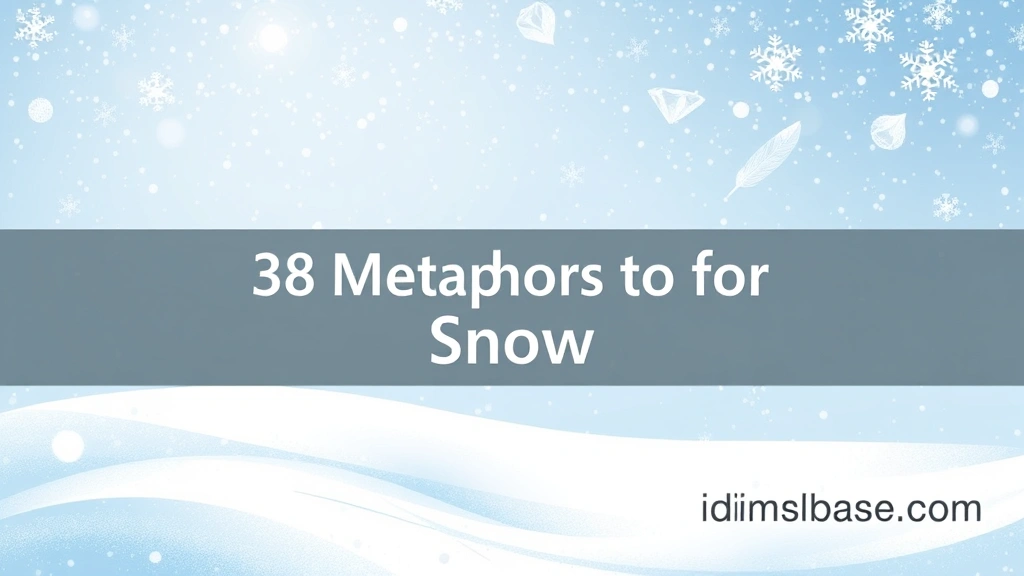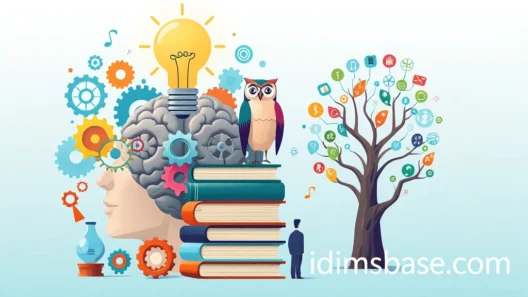Have you ever found yourself gazing out at a winter wonderland, searching for just the right words to describe the magic unfolding before your eyes? Snow, in all its silent, shimmering glory, often leaves us speechless. But what if we could paint vivid pictures with our words, transforming the ordinary into the extraordinary? That's where metaphors come in! They're like little magic wands for your language, helping you see and describe snow in entirely new and enchanting ways.
Imagine trying to describe the way snow falls, blankets the ground, or even feels beneath your boots. It’s more than just frozen water. It’s a feeling, a mood, a transformation! In this article, we’re going to embark on a delightful journey through 38 imaginative metaphors for snow. Get ready to sprinkle some poetic flair into your descriptions and truly capture the essence of winter's most captivating phenomenon.
The Art of Describing Snow: Why Metaphors Matter
Before we dive into our list, let's chat for a moment about why metaphors are so powerful. They don't just tell you what something is; they show you what it is like. This creates a deeper connection and understanding for your audience. When you use a metaphor, you're inviting your reader to see the world through a fresh lens, sparking their imagination and making your writing truly memorable.
Think about it: "The snow fell" is perfectly fine. But "The snow fell like a whispered secret" – now, that's a different story, isn't it? It evokes a sense of quiet, intimacy, and perhaps even a touch of mystery. That's the power we're tapping into today!
38 Enchanting Metaphors for Snow
Let's explore some truly captivating ways to describe snow. You’ll find a mix of classic imagery and fresh, unexpected comparisons.
Snow as a Blanket or Covering
This is a very common and effective way to describe snow. It emphasizes its ability to cover and transform landscapes.
- A white blanket: Simple, cozy, and universally understood.
- Nature's duvet: A softer, more luxurious version of a blanket, suggesting warmth and comfort.
- A pristine canvas: Highlights its untouched beauty, ready for footprints or new art.
- A soft shroud: Evokes a sense of quietness and perhaps even a gentle farewell to the green world.
- A winter coat: Suggests protection and warmth for the earth.
- A sugary glaze: Perfect for describing a light, sparkling layer.
Snow as a Textile or Fabric
Snow often resembles delicate fabrics, especially when it's light and fluffy.
- A lace shawl: For delicate, intricate flakes.
- Cotton wool: Emphasizes its softness and fluffiness.
- A feathered quilt: Combines the softness of feathers with the warmth of a quilt.
- Whispers of silk: For light, almost weightless snowfall.
Snow as a Living Entity or Spirit
Sometimes, snow seems to have a life of its own, dancing or settling with intention.
- Dancing fairies: When flakes twirl and spin in the air.
- Tiny white ghosts: For a quiet, ethereal, almost spooky feel.
- Winter's breath: Suggests the cold, vital essence of the season.
- A silent storyteller: As it covers the world in quiet tales.
- Nature's lullaby: For the peaceful, calming effect of a snowfall.
Snow as a Sweet Treat or Food

Its appearance can often remind us of delicious confections!
- Powdered sugar: For a light dusting on trees or rooftops.
- Whipped cream: When it's piled high and fluffy.
- Vanilla frosting: For a smooth, thick layer.
- Crushed diamonds: When it sparkles brightly in the sun.
Snow as a Precious Material or Gem
The way snow glitters and transforms the landscape can make it seem incredibly valuable.
- A carpet of pearls: For a shimmering, delicate ground cover.
- Scattered diamonds: When individual flakes catch the light.
- Crystal dust: Emphasizes its delicate, sparkling nature.
- Glittering jewels: For a truly dazzling, reflective scene.
Snow as a Sound or Absence of Sound
Snow has a unique way of muffling sounds, creating a distinct auditory experience.
- A muffling hush: The way it silences the world.
- Winter's whisper: For soft, almost inaudible snowfall.
- A frozen silence: The profound quiet that follows a heavy snow.
Snow as a Transformation or Magic

Snow changes everything, making the familiar unfamiliar and magical.
- A magic spell: For its sudden, transformative power.
- Nature's disguise: How it hides the familiar landscape.
- A fresh start: Symbolizing purity and new beginnings.
- Winter's brushstroke: As it paints the landscape white.
Snow as a Natural Phenomenon or Element
More abstract, but still evocative comparisons.
- Feathers from the sky: Simple, visual, and gentle.
- A million tiny stars: When flakes are illuminated at night.
- Clouds fallen to earth: For heavy, low-lying snow.
- Nature's confetti: For light, celebratory flurries.
- A silent architect: As it sculpts drifts and shapes the land.
Snow as a Memory or Feeling
Snow can evoke powerful emotions and nostalgic feelings.
- Childhood dreams: For the wonder and joy it brings.
- A forgotten song: For its quiet, wistful presence.
- A comforting embrace: For the feeling of being nestled in winter's calm.
Key Takeaways

- Metaphors are powerful tools: They transform ordinary descriptions into vivid, imaginative language.
- Snow offers endless inspiration: Its varied forms, textures, and effects make it a perfect subject for metaphorical language.
- Choose the right metaphor: Consider the specific aspect of snow you want to highlight (e.g., its softness, its sparkle, its silence).
- Practice makes perfect: The more you play with words, the more naturally metaphors will come to you.
Frequently Asked Questions (FAQs)
Q1: What is a metaphor?
A1: A metaphor is a figure of speech that directly compares two unlike things by stating that one is the other, without using "like" or "as." It creates a vivid image or idea by highlighting a shared quality between the two things. For example, saying "the snow is a white blanket" directly equates snow with a blanket.
Q2: How do metaphors differ from similes?
A2: The main difference is the use of "like" or "as." A simile compares two unlike things using "like" or "as" (e.g., "The snow was like cotton wool"). A metaphor directly states one thing is another (e.g., "The snow was cotton wool"). Both are powerful for creating imagery, but metaphors tend to be more assertive and direct.
Q3: Why is it important to use metaphors when describing snow?
A3: Using metaphors for snow helps to:
* Create vivid imagery: They paint a clearer, more imaginative picture in the reader's mind.
* Evoke emotion: They can convey feelings like peace, wonder, mystery, or coziness.
* Add depth and richness: They move beyond simple factual descriptions to offer a deeper understanding or perspective.
* Make writing more engaging: They surprise and delight the reader, keeping them interested.
Q4: Can I combine metaphors in my writing?
A4: Absolutely! Combining metaphors can lead to even richer descriptions, but be careful not to overdo it or create confusing mixed metaphors. For instance, you could say, "The snow, a silent storyteller, laid a blanket of pearls across the sleeping town." This combines the idea of snow as a narrator with its appearance as a precious covering.
Q5: Are there any common mistakes to avoid when using metaphors?
A5: Yes, a few to watch out for:
* Mixed metaphors: Combining two unrelated metaphors that clash (e.g., "He was a loose cannon, but he kept his nose to the grindstone").
* Overuse: Too many metaphors can make your writing feel forced or clunky. Use them thoughtfully for impact.
* Clichés: Some metaphors are so common they've lost their impact (e.g., "white as snow" is a simile, but "blanket of snow" is almost a cliché metaphor). Try to find fresh angles!
Q6: How can I come up with my own unique metaphors for snow?
A6: Here's a little trick:
1. Observe closely: Spend time truly looking at snow. What does it remind you of? Its texture, how it falls, how it sounds (or doesn't sound), how it changes the landscape.
2. Engage your senses: What does snow feel like? What does it look like? What does it make you think of?
3. Brainstorm categories: Think about different categories of things: food, textiles, animals, emotions, sounds, gems, etc. Then, ask yourself, "How is snow like something in this category?"
4. Play with verbs and adjectives: Instead of just "snow is a blanket," think about what the "blanket" does or is. "The blanket smothered the landscape," or "The blanket was fluffy."
Conclusion
We hope this journey through 38 metaphors for snow has sparked your imagination and given you a fresh perspective on winter's most iconic element. Language is a beautiful tool, and by embracing metaphors, you can transform your descriptions from ordinary to truly extraordinary.
So, the next time you see snow falling, don't just say "it's snowing." Ask yourself: What else is it? Is it a whispered secret, a pristine canvas, or perhaps nature's lullaby? Experiment, play, and let your words dance like the snowflakes themselves. What's your favorite way to describe snow? Share your own snowy metaphors in the comments below! We'd love to hear them.






